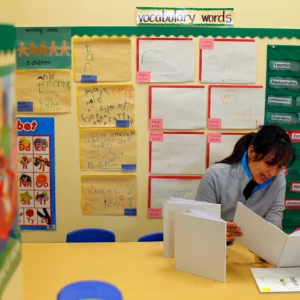Introduction
public speaking skills for students s are essential for their personal and professional growth. The ability to communicate effectively and confidently in front of an audience not only boosts their self-confidence but also enhances their overall communication skills. In this article, we will explore various strategies and techniques to develop strong public speaking skills for students, empowering them to express their thoughts and ideas with clarity and conviction.
Table of Contents
The Importance of public speaking skills for Students
public speaking skills for students play a crucial role in a student’s life. They equip students with the ability to articulate their ideas, opinions, and perspectives effectively. By developing strong public speaking skills for students can confidently participate in class discussions, deliver presentations, and excel in group projects. These skills are equally valuable beyond the classroom, as they prepare students for future career opportunities, leadership roles, and community engagements. Effective public speaking fosters critical thinking, boosts self-esteem, and enhances persuasive abilities. It enables students to become effective communicators, capable of making a lasting impact on their audience.
Overcoming Fear and Building Confidence
One of the primary challenges students face when it comes to public speaking is fear and anxiety. To develop strong public speaking skills for students must first overcome their fear and build confidence. Encouraging a supportive and inclusive environment within the classroom can go a long way in alleviating anxiety. Teachers can introduce activities like role-playing, impromptu speaking, and gradual exposure to larger audiences to help students gradually build their confidence. Moreover, practicing deep breathing techniques, positive self-talk, and visualization exercises can also aid in reducing anxiety and boosting self-assurance. By nurturing a growth mindset and providing constructive feedback, educators can empower students to embrace challenges and develop resilience in public speaking.
Effective Preparation and Organization
Effective preparation and organization are key elements in developing strong public speaking skills for students. Encourage students to thoroughly research their topic, gather relevant information, and organize their thoughts in a structured manner. Students should create an outline or a mind map to ensure a logical flow of ideas. Practicing the speech multiple times before the actual presentation helps in internalizing the content and enhancing delivery. Additionally, encourage students to anticipate potential questions or challenges they may face during their speech and prepare appropriate responses. By instilling the value of preparation and organization, students can deliver confident and well-structured speeches that capture the audience’s attention.
Developing Verbal and Non-Verbal Communication Skills
Developing strong verbal and non-verbal communication skills is crucial for effective public speaking. Encourage students to practice enunciating their words clearly, varying their tone and pace, and using appropriate gestures to emphasize key points. Voice modulation and articulation exercises can help students improve their vocal delivery. Additionally, non-verbal cues such as maintaining eye contact, using facial expressions, and adopting an open posture contribute to effective communication. Students should be encouraged to practice these skills in front of a mirror or record themselves to identify areas for improvement. By honing their verbal and non-verbal communication skills, students can engage their audience and convey their message more effectively.
Engaging the Audience through Storytelling
Storytelling is a powerful technique to engage the audience and make a lasting impression. Encourage students to incorporate relevant anecdotes, personal experiences, or case studies into their speeches. By weaving compelling narratives, students can capture the audience’s attention and create an emotional connection. Teach students the art of structuring stories, including a clear beginning, middle, and end. Encourage them to use descriptive language, vivid imagery, and suspense to engage the audience throughout their speech. By mastering the art of storytelling, students can deliver impactful speeches that leave a lasting impression on their listeners.
Utilizing Visual Aids Effectively
Visual aids can enhance the impact and clarity of a student’s speech. Encourage students to incorporate visual aids such as PowerPoint presentations, posters, or props to support their message. However, it is crucial to emphasize that visual aids should complement the speech rather than overshadow it. Students should ensure that their visual aids are visually appealing, concise, and easy to understand. Encourage them to use bullet points, charts, or graphs to convey complex information effectively. It is important to remind students to maintain eye contact with the audience rather than solely relying on visual aids. By effectively utilizing visual aids, students can reinforce their message, engage the audience visually, and make their presentations more memorable.
Practicing Active Listening and Adaptation
Public speaking is a dynamic process that requires active listening and adaptation. Encourage students to pay attention to the audience’s reactions and adapt their speech accordingly. Remind them to pause, ask questions, or seek feedback during their speech to ensure audience engagement. By practicing active listening, students can gauge the audience’s level of understanding and tailor their delivery to ensure clarity. Additionally, encourage students to be open to constructive criticism and use it as an opportunity for growth. By embracing feedback and adapting their speeches based on audience reactions, students can become more effective communicators and connect with their listeners on a deeper level.
Conclusion
Developing strong public speaking skills for students is a valuable asset that extends beyond the classroom. By overcoming fear, building confidence, and adopting effective strategies, students can develop their public speaking skills for students to articulate their ideas with clarity and conviction. Encouraging active listening, utilizing visual aids, and incorporating storytelling techniques further enhance the impact of their speeches.
Through practice, perseverance, and a supportive environment, students can develop the skills necessary to excel in public speaking, thereby preparing them for future success in academics, career pursuits, and community engagement. By equipping students with strong public speaking skills for students, we empower them to become confident and influential communicators who can make a positive impact in various aspects of their lives.
Learn about: Unlock the full potential of education with learning progressions, revolutionizing learning outcomes and fostering continuous growth for students.




